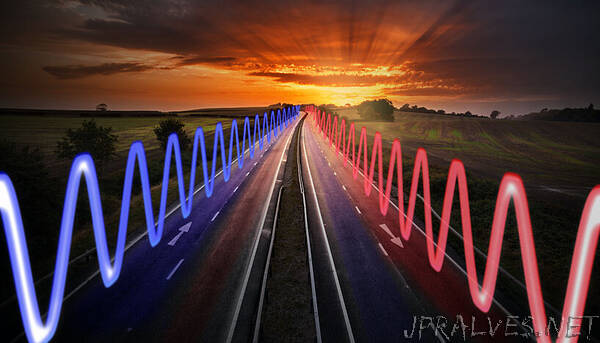
“New possibilities for controlling signal routing in quantum information processing
Routing signals and isolating them against noise and back-reflections are essential in many practical situations in classical communication as well as in quantum processing. In a theory-experimental collaboration, a team led by Andreas Nunnenkamp from the University of Vienna and Ewold Verhagen based at the research institute AMOLF in Amsterdam has achieved unidirectional transport of signals in pairs of “one-way streets”. This research published in Nature Physics opens up new possibilities for more flexible signaling devices.
Devices that allow to route signals, for example carried by light or sound waves, are essential in many practical situations. This is, for instance, the case in quantum information processing, where the states of the quantum computer have to be amplified to read them out - without noise from the amplification process corrupting them. That is why devices that allow signals to travel in a one-way channel e.g. isolators or circulators are much sought-after. However, at present such devices are lossy, bulky, and require large magnetic fields that break time-reversal symmetry to achieve unidirectional behaviour. These limitations have prompted strong efforts to find alternatives that take less space and that do not rely on magnetic fields.
The new study published in Nature Physics introduces a new class of systems characterized by a phenomenon the authors call “quadrature nonreciprocity”. Quadrature nonreciprocity exploits interference between two distinct physical processes. Each of the processes produces a wave that contributes to the transmitted signal. Like water waves produced by two thrown pebbles, the two waves can either cancel or amplify each other, in a phenomenon known as interference.
This allows for unidirectional transmission of signals without time-reversal breaking and leads to a distinctive dependence on the phase, i.e., the quadrature, of the signal. “In these devices, transmission depends not only on the direction of the signal, but also on the signal quadrature” says Clara Wanjura, the theoretical lead author of the study. “This realizes a ‘dual carriageway’ for signals: one quadrature is transmitted in one direction and the other quadrature in the opposite direction. Time-reversal symmetry then enforces that the quadratures always travel pairwise along opposite directions in two separate lanes.”
The experimental team at AMOLF has demonstrated this phenomenon experimentally in a nanomechanical system where interactions among mechanical vibrations of small silicon strings are orchestrated by laser light. Laser light exerts forces on the strings, thereby mediating interactions between their different vibration ‘tones’. Jesse Slim, the experimental lead author of the study says: “We have developed a versatile experimental toolbox that allowed us to control the two different types of interactions that are needed to implement quadrature nonreciprocity. This way we could reveal the resulting unidirectional transport of the signals experimentally.”
The work opens up new possibilities for signal routing and quantum-limited amplification, with potential applications in quantum information processing and sensing.
Publication in Nature Physics:
Clara C. Wanjura, Jesse J. Slim, Javier del Pino, Matteo Brunelli, Ewold Verhagen, and Andreas Nunnenkamp “Quadrature nonreciprocity in bosonic networks without breaking time-reversal symmetry”
DOI: 10.1038/s41567-023-02128-x”
